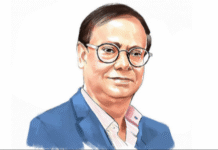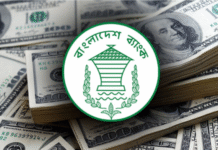Households pay more for loans from banks than from MFIs: study
Bangladesh stands second among South Asian nations in ensuring access to financial services for its citizens, a recent study found.
Around 66 percent of the households in Bangladesh now have access to services including credit, savings and insurance from banks or microfinance institutions (MFIs) and cooperatives, according to Institute of Microfinance (InM).
The country comes second only to Sri Lanka, where 80.4 percent of the population is covered by the financial umbrella. In contrast, only 48 percent of the households in India have access to such services and 60 percent in Pakistan.
“Financial inclusion has occurred in a big way in Bangladesh thanks to the MFIs, who have been contributing greatly to resource mobilisation,” said MA Baqui Khalily, co-author of the study, ‘Access to Financial Services in Bangladesh: What Do We Know?”
It has been observed that financial inclusion as percentage of the total population increased to 56.43 percent in 2010 from 39.76 percent in 2004, Bangladesh Bank said in a report.
A little over 31 percent of the households have access to savings and credit in both the formal and quasi-formal markets. Of them, around 4 percent have access to both deposits and credit in formal financial market, according to the study.
The quasi-formal market has the dominant presence in deposit/savings mobilisation and credit, Khalily said yesterday at a two-day national conference on Microfinance and Development at the PKSF auditorium organised by InM.
A total of 8,936 households were randomly selected from 275 upazilas in 63 districts across the country for the study.
The households’ five-year credit profiles were used to define access to credit, while access to savings and access to insurance were measured by current or past use of these services.
The study found that households have to bear more borrowing cost for getting loan from formal credit market than from MFIs and cooperatives.
Non-interest cost as percentage of average total transaction cost is the highest in formal credit market, where it is over 16 percent. In contrast, it is only 9.20 percent in quasi-formal credit market.
“More than 50 percent of the non-interest cost in formal market is bribing, while it is very negligible in quasi-formal credit market,” said Khalily, also the executive director of InM.
A 10 percent increase in the total supply of credit at the village level boosts financial inclusion by 4.8 percent, he said.
“Financial inclusion is not only about bringing all households under financial network through savings. It is also about deepening credit services in every part of the country.”
Only around 11 percent of the households have access to formal insurance services due to less awareness of the service, he said.
The study, however, suggested that fundamental changes in financial policies and market structure are required for sustainable financial inclusion.
“We have to evaluate the proposition of establishing rural banks or transforming some of the sound MFIs into rural banks with appropriate governance structure.”
Khalily called for restructuring of private banks and insurance companies so that their services can be effectively expanded beyond urban areas.
“A mere policy statement will not suffice—a proper debate is required.”
Economic growth of a country plays a pivotal role for greater financial inclusion, said Hassan Zaman, chief economist of Bangladesh Bank.
Bangladesh Bank has been providing a big thrust to financial inclusion over the last couple of years by promoting mobile banking and compelling the banks to open more branches in rural areas, he said.
Zaman also agreed that non-interest costs are high in the formal credit market due to a number of factors that include loan processing fees and bribes.
Source: The Daily Star










